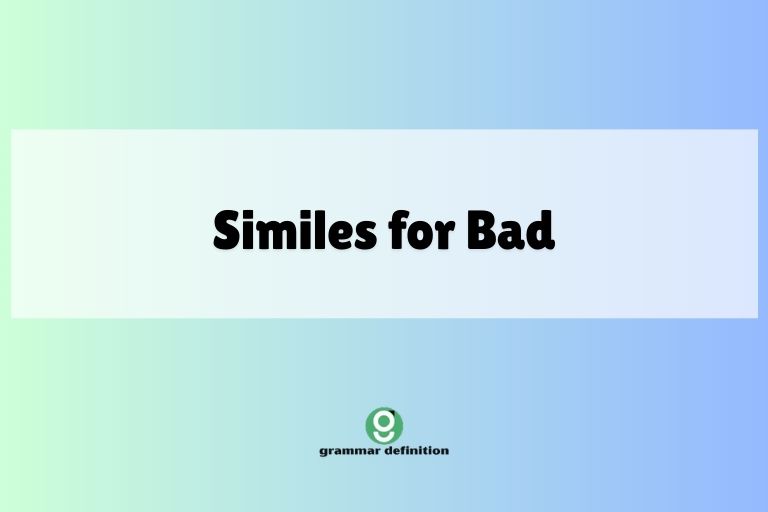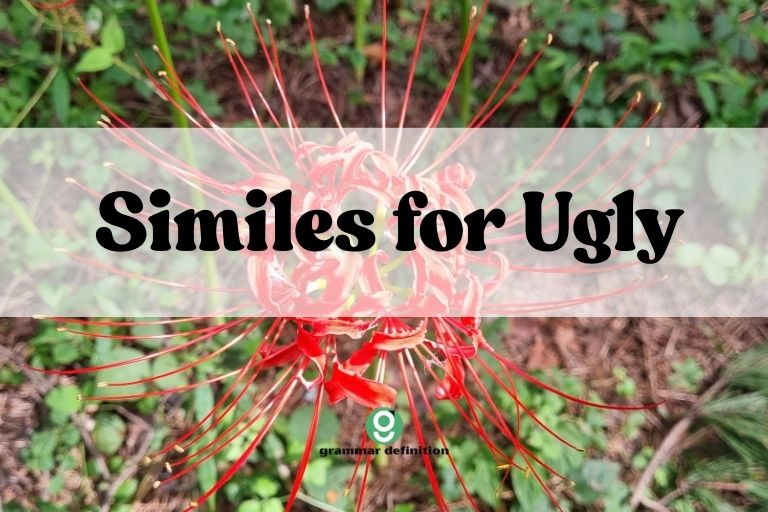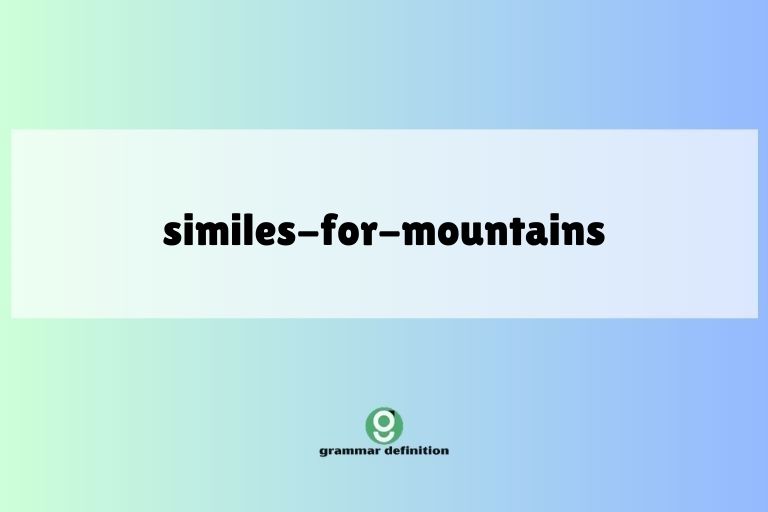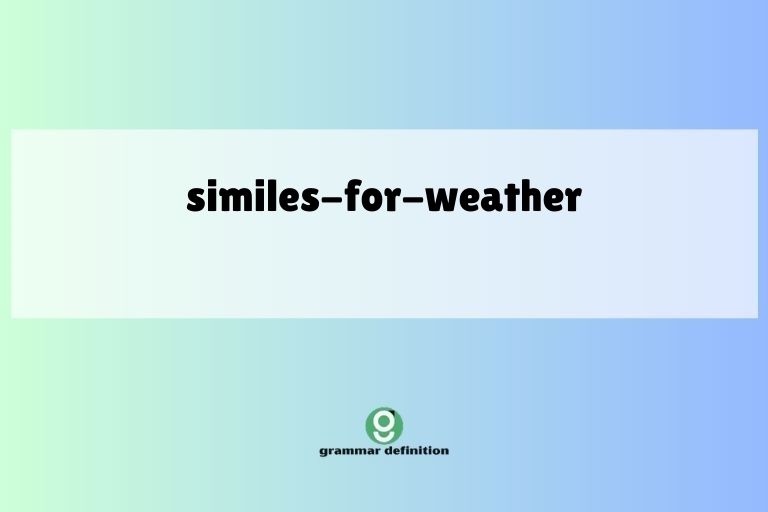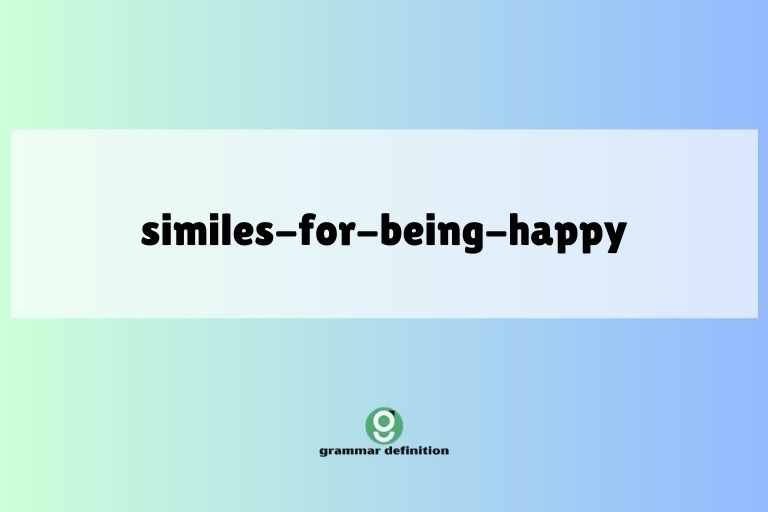Similes for Love: A Comprehensive Guide
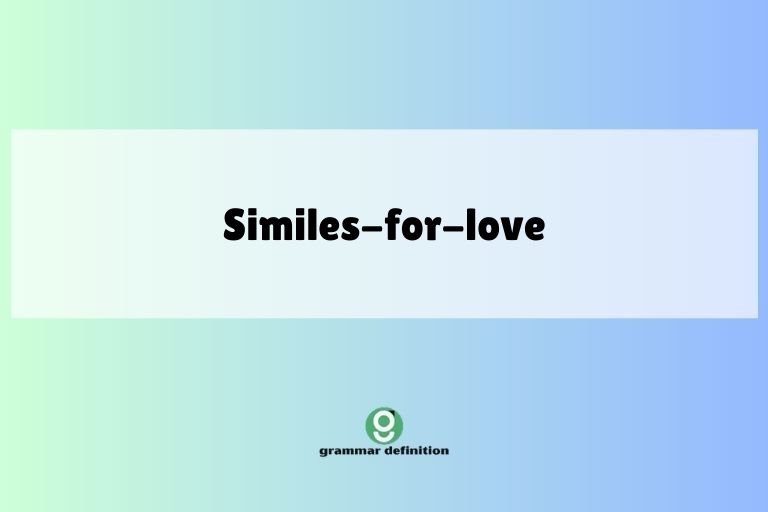
Love, a complex and multifaceted emotion, often defies simple description. To capture its essence, writers and speakers frequently turn to figurative language, particularly similes.
Understanding similes for love allows us to express the depth and intricacies of this powerful emotion in vivid and relatable ways. This article delves into the world of similes for love, exploring their structure, types, and usage.
Whether you are a student, writer, or simply someone looking to better articulate your feelings, this guide will provide you with the tools to master the art of expressing love through similes.
Table of Contents
- Introduction
- Definition of Similes
- Structural Breakdown of Similes
- Types of Similes
- Examples of Similes for Love
- Usage Rules for Similes
- Common Mistakes with Similes
- Practice Exercises
- Advanced Topics: Nuance and Context
- Frequently Asked Questions
- Conclusion
Definition of Similes
A simile is a figure of speech that directly compares two different things using the words “like” or “as.” The primary function of a simile is to enhance description by creating a vivid image or conveying a deeper meaning through the comparison. Similes help to make abstract concepts more concrete and understandable by relating them to something familiar.
In the context of love, similes are used to express the qualities, intensity, and effects of this emotion in creative and impactful ways. Similes help us paint a picture of love, showing not just telling.
The key elements of a simile are the two things being compared (the tenor and the vehicle) and the word that establishes the comparison (“like” or “as”). The tenor is the subject being described (in this case, love or an aspect of love), and the vehicle is the object or concept to which it is being compared. The comparison should highlight a shared quality or characteristic between the tenor and the vehicle.
Structural Breakdown of Similes
Understanding the structure of a simile is crucial for creating effective and meaningful comparisons. A simile typically follows a simple structure:
Subject (Tenor) + Linking Word (“like” or “as”) + Object of Comparison (Vehicle)
Let’s break down the components with examples related to love:
- Subject (Tenor): This is the aspect of love you want to describe. Examples: “Her love,” “His heart,” “Their bond.”
- Linking Word: This is either “like” or “as.” These words are interchangeable in many similes, but sometimes one might sound more natural than the other.
- Object of Comparison (Vehicle): This is what you are comparing the subject to. It should share a characteristic with the subject that you want to emphasize. Examples: “a warm fire,” “a gentle breeze,” “a sturdy oak.”
Here are some examples illustrating the structure:
- Her love is like a warm fire, providing comfort and warmth.
- His heart is as strong as a sturdy oak, unyielding in its devotion.
- Their bond is like a gentle breeze, always present and refreshing.
The effectiveness of a simile depends on the clarity and relevance of the comparison. The vehicle should be something that the audience can easily understand and relate to, and the shared characteristic should be evident.
Types of Similes
While all similes share the same basic structure, they can be categorized based on the type of comparison they make and the effect they create. Here are a few common types of similes used to describe love:
Descriptive Similes
Descriptive similes focus on illustrating the qualities or characteristics of love through comparison. These similes often use sensory details to create a vivid image in the reader’s mind.
Example: “Her smile was like sunshine, warming my soul.”
Emotional Similes
Emotional similes aim to convey the feelings and emotions associated with love. These similes often use comparisons that evoke strong emotional responses in the reader.
Example: “His absence felt like a cold winter, leaving me frozen and alone.”
Behavioral Similes
Behavioral similes describe how love manifests in actions and behaviors. These similes often compare loving actions to natural or everyday occurrences.
Example: “They nurtured their love like a gardener tends to delicate flowers, with care and attention.”
Abstract Similes
Abstract similes compare love to abstract concepts or ideas, such as time, space, or music. These similes can be more complex and require deeper thought to fully appreciate.
Example: “Love is like a symphony, with different movements and harmonies creating a beautiful whole.”
Examples of Similes for Love
Here are multiple examples of similes for love, categorized for clarity. These examples showcase the diverse ways in which similes can be used to express the complexities of love.
Similes Describing the Feeling of Love
This table contains examples that capture the essence of *feeling* love.
| Simile | Explanation |
|---|---|
| Love is like a warm blanket on a cold night. | Provides comfort and security. |
| Love is as sweet as honey. | Highlights the pleasant and delightful nature of love. |
| Love is like a gentle rain, nourishing the soul. | Suggests that love is refreshing and revitalizing. |
| Love is as bright as the morning sun. | Emphasizes the joy and hope that love brings. |
| Love is like a peaceful river, flowing smoothly. | Conveys a sense of tranquility and harmony. |
| Love is as strong as a mountain. | Highlights the unwavering and resilient nature of love. |
| Love is like a blooming flower, beautiful and delicate. | Suggests that love is something that grows and blossoms. |
| Love is as wild as the ocean. | Implies love can be vast, powerful, and untamed. |
| Love is like a guiding star. | Provides direction and hope. |
| Love is as soft as a feather. | Highlights the gentle and tender aspects of love. |
| Love is like a cozy fire. | It keeps you warm, safe, and comforted. |
| Love is as vibrant as a rainbow. | Full of color, joy, and promise. |
| Love is like a deep breath. | Essential, life-giving, and calming. |
| Love is as precious as gold. | Valuable, cherished, and irreplaceable. |
| Love is like a gentle hug. | Comforting, supportive, and reassuring. |
| Love is as refreshing as a cool drink on a hot day. | Revitalizing and satisfying. |
| Love is like a song. | Full of melody, harmony, and emotion. |
| Love is as unbreakable as a diamond. | Strong, resilient, and enduring. |
| Love is like a sturdy bridge. | Connects people and helps them overcome obstacles. |
| Love is as constant as the northern star. | Reliable, unwavering, and always there. |
Similes Describing the Appearance of Love
This table contains examples that describe how love looks or manifests outwardly.
| Simile | Explanation |
|---|---|
| Her eyes sparkled like stars when she spoke of him. | Highlights the joy and excitement in her expression. |
| Their smiles were as bright as the sun when they were together. | Emphasizes the happiness and radiance of their connection. |
| His gaze was like a warm embrace, comforting and reassuring. | Conveys the tenderness and care in his look. |
| Love is as radiant as the summer sun. | Full of warmth, energy, and life. |
| Their laughter sounded like music to my ears. | Their joy is pleasing and harmonious. |
| Her touch was as gentle as a feather. | Highlighting the softness and tenderness in her touch. |
| His voice was like a soothing melody. | Suggests his voice is calming and pleasant. |
| Love is as beautiful as a blooming rose. | Elegant, delicate, and captivating. |
| Their love story unfolded like a fairytale. | Charming, magical, and enchanting. |
| Her presence was as calming as a gentle breeze. | Suggests she brings peace and tranquility. |
| Their connection was as visible as a halo. | Their bond is radiant, obvious, and divine. |
| Her love shone like a beacon in the night. | Guiding, hopeful, and illuminating. |
| His love was as transparent as glass. | Honest, clear, and without secrets. |
| Their love was as pure as freshly fallen snow. | Innocent, untainted, and beautiful. |
| Her love was a vibrant as a field of wildflowers. | Colorful, diverse, and full of life. |
| His love was as solid as a rock. | Strong, dependable, and unwavering. |
| Their love was as captivating as a work of art. | Beautiful, inspiring, and thought-provoking. |
| Her love was as comforting as a warm cup of tea. | Soothing and reassuring. |
| His love was as steady as a heartbeat. | Consistent, reliable, and essential. |
| Their love was as timeless as the stars. | Eternal, enduring, and classic. |
Similes Describing the Intensity of Love
This table provides examples focused on the *strength* or *intensity* of love.
| Simile | Explanation |
|---|---|
| His love was as strong as steel. | Highlights the unwavering and resilient nature of his love. |
| Her passion burned like a flame. | Emphasizes the intense and fiery nature of her love. |
| Their love was like a raging fire, consuming everything in its path. | Conveys the overwhelming and all-encompassing nature of their love. |
| Love is as deep as the ocean. | Immeasurable, profound, and mysterious. |
| His devotion was like a never-ending song. | Suggests that his love is constant and enduring. |
| Their commitment was as solid as a rock. | Highlighting the steadfast and unwavering nature of their dedication. |
| Love is like a powerful current. | Irresistible and all-consuming. |
| Her love was as vast as the universe. | Limitless, boundless, and infinite. |
| His love was like a hurricane. | Powerful, intense, and transformative. |
| Their passion was as intense as a volcanic eruption. | Suggests love is explosive and fiery. |
| Her love was as fierce as a mother bear protecting her cubs. | Protective, strong, and unwavering. |
| His love burned like a thousand suns. | Intense, radiant, and all-consuming. |
| Their love was as unbreakable as a fortress. | Resilient, strong, and secure. |
| Her love flowed like a mighty river. | Powerful, constant, and unstoppable. |
| His love was as unyielding as the mountains. | Steadfast, firm, and enduring. |
| Their love was as consuming as a wildfire. | Passionate, intense, and all-encompassing. |
| Her love shone as brightly as a supernova. | Brilliant, radiant, and extraordinary. |
| His love roared like a tempest. | Powerful, forceful, and overwhelming. |
| Their love was as infinite as the stars in the sky. | Boundless, endless, and eternal. |
| Her love was as steadfast as a lighthouse. | Reliable, guiding, and constant. |
Similes Describing the Effects of Love
This table contains examples detailing the *impact* or *effects* love has.
| Simile | Explanation |
|---|---|
| Love is like a medicine, healing all wounds. | Highlights the restorative and therapeutic power of love. |
| Love is as contagious as laughter. | Emphasizes its ability to spread joy and happiness. |
| Love is like a shield, protecting against harm. | Conveys its protective and supportive nature. |
| Love is as liberating as a bird taking flight. | Freeing, empowering, and uplifting. |
| Love is like a breath of fresh air. | Refreshing, revitalizing, and invigorating. |
| Love is as inspiring as a muse. | Encouraging creativity and motivation. |
| Love is like a compass. | Providing direction and guidance. |
| Love is as transformative as a butterfly emerging from its cocoon. | Suggests growth, change, and renewal. |
| Love is like a lighthouse guiding ships safely to shore. | Provides guidance, safety, and direction. |
| Love is as comforting as a warm embrace. | Suggests it provides comfort and security. |
| Love is like a bridge over troubled water. | Supportive, helpful, and reassuring in difficult times. |
| Love is as nurturing as the earth. | Providing growth, sustenance, and care. |
| Love is like a key that unlocks hidden potential. | Empowering, revealing, and transformative. |
| Love is as enlightening as a flash of insight. | Clarifying, illuminating, and understanding. |
| Love is like a balm that soothes a wounded heart. | Healing, comforting, and restorative. |
| Love is as grounding as the roots of a tree. | Stabilizing, secure, and unwavering. |
| Love is like a symphony that fills the soul with joy. | Harmonious, uplifting, and emotional. |
| Love is as fortifying as a strong foundation. | Supporting, strengthening, and enduring. |
| Love is like a dance that brings two hearts together. | Harmonious, rhythmic, and joyful. |
| Love is as inspiring as the first bloom of spring. | Hopeful, refreshing, and promising. |
Usage Rules for Similes
Using similes effectively requires adherence to certain rules to ensure clarity, impact, and appropriateness. Here are some key usage rules to keep in mind:
- Ensure Relevance: The comparison should be relevant and logical. The object of comparison (vehicle) should share a clear characteristic with the subject (tenor).
- Maintain Clarity: The comparison should be easy to understand. Avoid using obscure or overly complex objects of comparison.
- Consider Context: The simile should be appropriate for the context and audience. Avoid using similes that may be offensive or insensitive.
- Avoid Clichés: Try to avoid overused similes (clichés) that have lost their impact. Aim for originality and creativity in your comparisons.
- Use Sparingly: While similes can be powerful, using too many in a short space can become overwhelming and dilute their impact.
Example of a cliché simile to avoid: “Love is like a rose.” (While beautiful, it’s been used extensively). Instead, try something more original: “Love is like a carefully cultivated garden, requiring constant attention to flourish.”
Common Mistakes with Similes
Even with a good understanding of similes, it’s easy to make mistakes. Here are some common errors to watch out for, along with correct examples:
| Incorrect | Correct | Explanation |
|---|---|---|
| Love is like to happiness. | Love is like happiness. | The word “to” is unnecessary and grammatically incorrect in this context. |
| Her love as a warm fire. | Her love is as a warm fire. | The verb “is” is needed to complete the sentence. |
| Love is as a walk in the park. | Love is like a walk in the park. | “Like” is generally preferred when using a noun phrase for comparison. |
| His heart is like strong. | His heart is as strong as steel. | Similes need a clear point of comparison. “Strong” is an adjective; “steel” provides a concrete comparison. |
| Love is like the feeling. | Love is like a warm embrace. | Be specific with the comparison. “Feeling” is too vague. |
| Their bond is as a connection. | Their bond is like a strong connection. | Adding “strong” adds context and clarity to the comparison. |
Practice Exercises
Test your understanding of similes for love with these exercises. Fill in the blanks to complete the similes, or create your own similes based on the prompts.
Exercise 1: Completing Similes
Complete the following similes with appropriate endings.
| Question | Answer |
|---|---|
| 1. Love is like a __________. | 1. Love is like a blooming flower. |
| 2. Her smile was as bright as __________. | 2. Her smile was as bright as the morning sun. |
| 3. His love is as strong as __________. | 3. His love is as strong as an oak tree. |
| 4. Their bond is like __________. | 4. Their bond is like a sturdy bridge. |
| 5. Love is as sweet as __________. | 5. Love is as sweet as honey. |
| 6. Her voice was like __________. | 6. Her voice was like a soothing melody. |
| 7. His touch was as gentle as __________. | 7. His touch was as gentle as a feather. |
| 8. Their passion burned like __________. | 8. Their passion burned like a flame. |
| 9. Love is as deep as __________. | 9. Love is as deep as the ocean. |
| 10. Love is like a __________, healing all wounds. | 10. Love is like a medicine, healing all wounds. |
Exercise 2: Creating Similes
Create your own similes for love based on the following prompts.
| Prompt | Example Answer |
|---|---|
| 1. Describe the feeling of being in love. | 1. Being in love is like floating on a cloud. |
| 2. Describe the appearance of someone in love. | 2. Her eyes shone like diamonds when she talked about him. |
| 3. Describe the intensity of love. | 3. Their love was as strong as a hurricane. |
| 4. Describe the effect of love on a person. | 4. Love is like a warm blanket on a cold day. |
| 5. Describe the devotion you feel for someone you love. | 5. My devotion to you is as constant as the stars in the sky. |
| 6. Describe the comfort love provides. | 6. Love is like a gentle hug after a long day. |
| 7. Describe the excitement of new love. | 7. New love is like a rollercoaster ride, full of thrills and excitement. |
| 8. Describe the security love provides. | 8. Love is like a safe harbor, protecting us from the storms of life. |
| 9. Describe how love makes you feel about yourself. | 9. Love makes me feel like I can conquer the world. |
| 10. Describe the power of forgiveness in love. | 10. Forgiveness in love is like a reset button, allowing us to start anew. |
Advanced Topics: Nuance and Context
Mastering similes involves understanding the subtle nuances and contextual factors that can influence their effectiveness. Advanced learners should consider the following:
- Cultural Context: Similes can be culturally specific. A comparison that resonates in one culture may not have the same impact in another.
- Personal Experience: The effectiveness of a simile can depend on the reader’s or listener’s personal experiences. A simile about a specific place or activity will be more meaningful to someone familiar with it.
- Subtlety and Implication: Similes can be used to imply deeper meanings or suggest emotions without stating them directly. This requires careful consideration of the connotations of the objects of comparison.
- Originality: While familiarity can make a simile more accessible, originality can make it more memorable and impactful. Strive to find fresh and creative comparisons that stand out.
For example, instead of saying “Love is like a game,” which can have negative connotations, consider “Love is like a dance, requiring coordination and teamwork.” This simile conveys a more positive and collaborative view of love.
Frequently Asked Questions
Here are some frequently asked questions about similes for love:
- What is the difference between a simile and a metaphor?
A simile directly compares two things using “like” or “as,” while a metaphor states that one thing is another. For example, “Love is like a warm fire” (simile) versus “Love is a warm fire” (metaphor).
- Can a simile be a cliché?
Yes, if a simile is overused and lacks originality, it becomes a cliché. It’s best to avoid clichés and aim for fresh, creative comparisons.
- How do I choose the right object of comparison for a simile?
Choose an object that shares a clear characteristic with the subject you want to describe and that is easily understood by your audience. Consider the context and the emotional effect you want to create.
- Is it okay to use multiple similes in a single piece of writing?
Yes, but use them sparingly. Too many similes can become overwhelming and dilute their impact. Focus on quality over quantity.
- How can I make my similes more original?
Think outside the box and consider less common objects of comparison. Use sensory details and personal experiences to create vivid and unique similes.
- What role does context play in using similes effectively?
Context is crucial. Ensure that the simile is appropriate for the situation, audience, and overall tone of your writing. A simile that works in one context may not work in another.
- Are there any rules about the length of a simile?
There are no strict rules about length, but similes should be concise and to the point. A longer simile can be effective if it adds depth and detail, but avoid unnecessary wordiness.
- Can similes be used in everyday conversation, or are they just for writing?
Similes can be used effectively in both writing and everyday conversation to add color and impact to your language. They can help you express your thoughts and feelings more vividly and engagingly.
Conclusion
Mastering similes for love can significantly enhance your ability to express the complexities of this powerful emotion. By understanding the structure, types, and usage rules of similes, you can create vivid and impactful comparisons that resonate with your audience.
Remember to be creative, avoid clichés, and consider the context in which you are using similes. With practice and attention to detail, you can master the art of expressing love through the power of similes.
The key takeaway is that similes, when used thoughtfully, can transform abstract concepts into relatable experiences. As you continue to explore the world of similes, experiment with different comparisons and pay attention to how they affect your writing and communication.
Embrace the challenge of finding new and inventive ways to express the timeless emotion of love.

